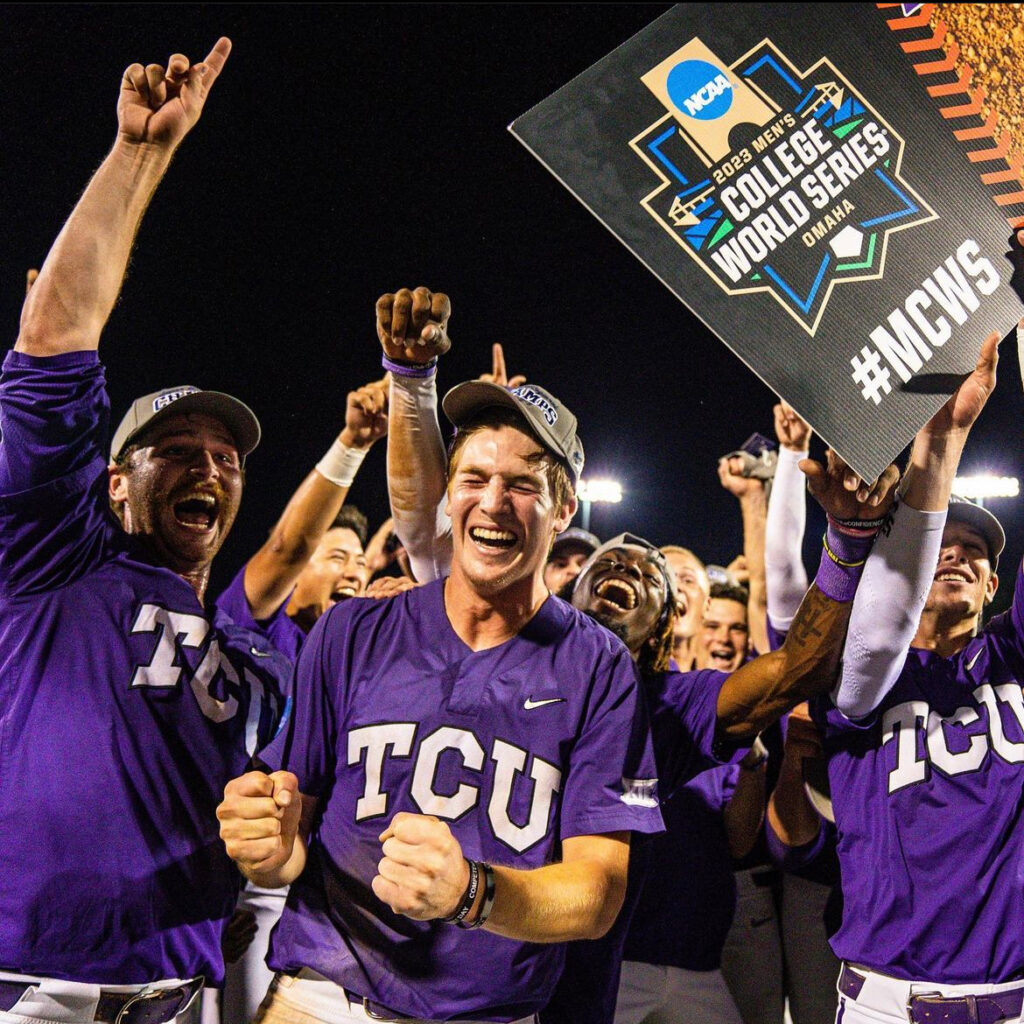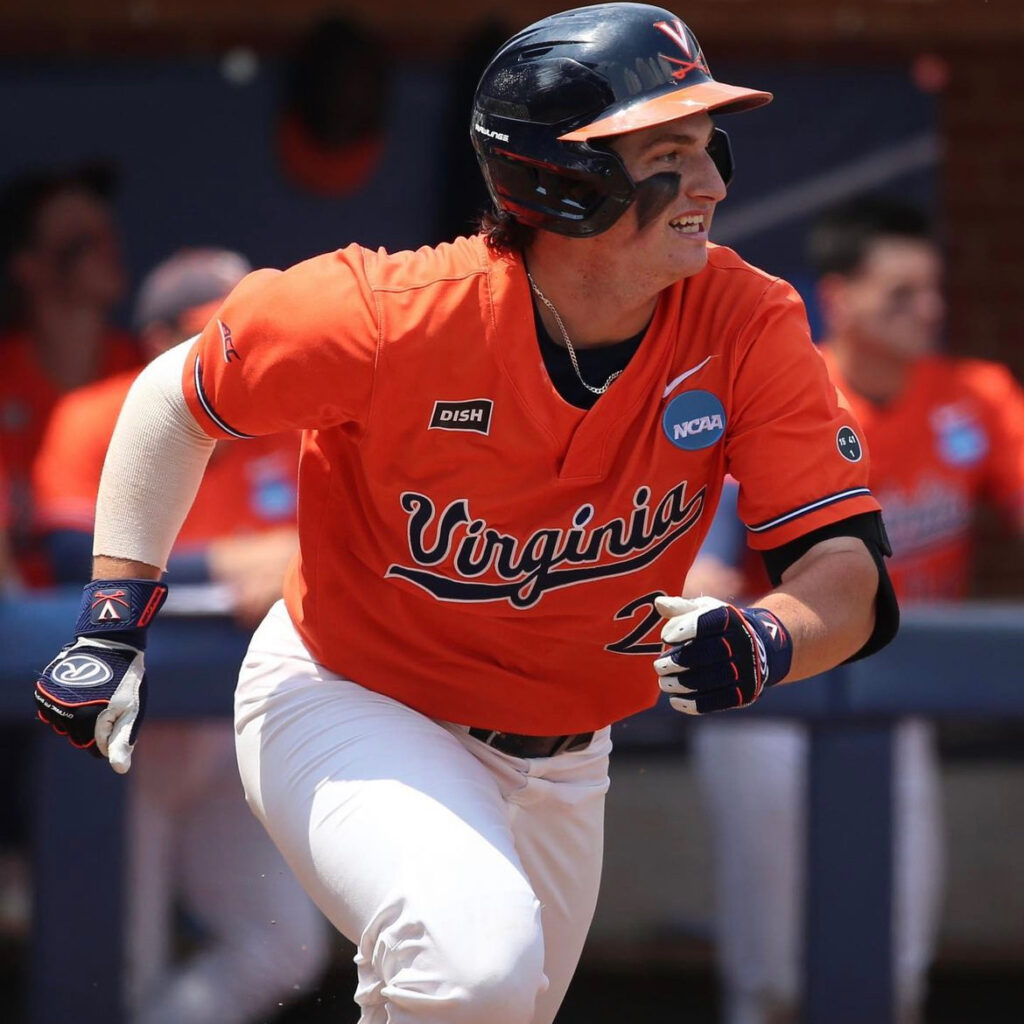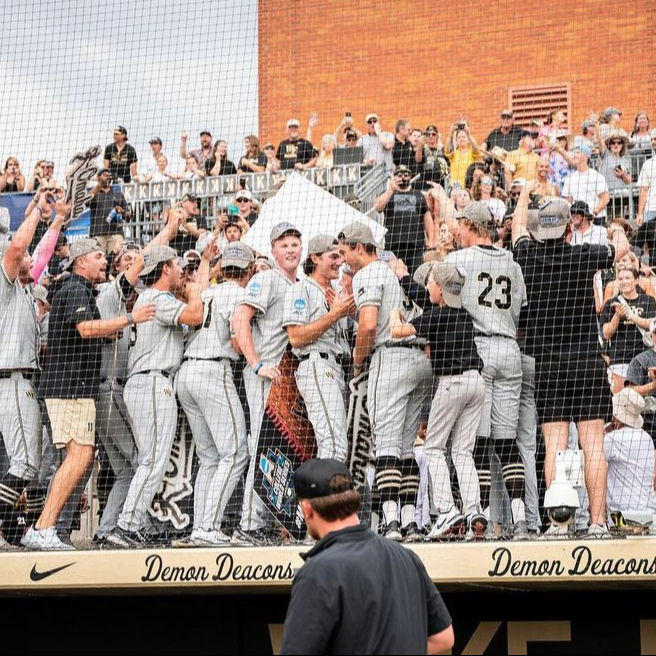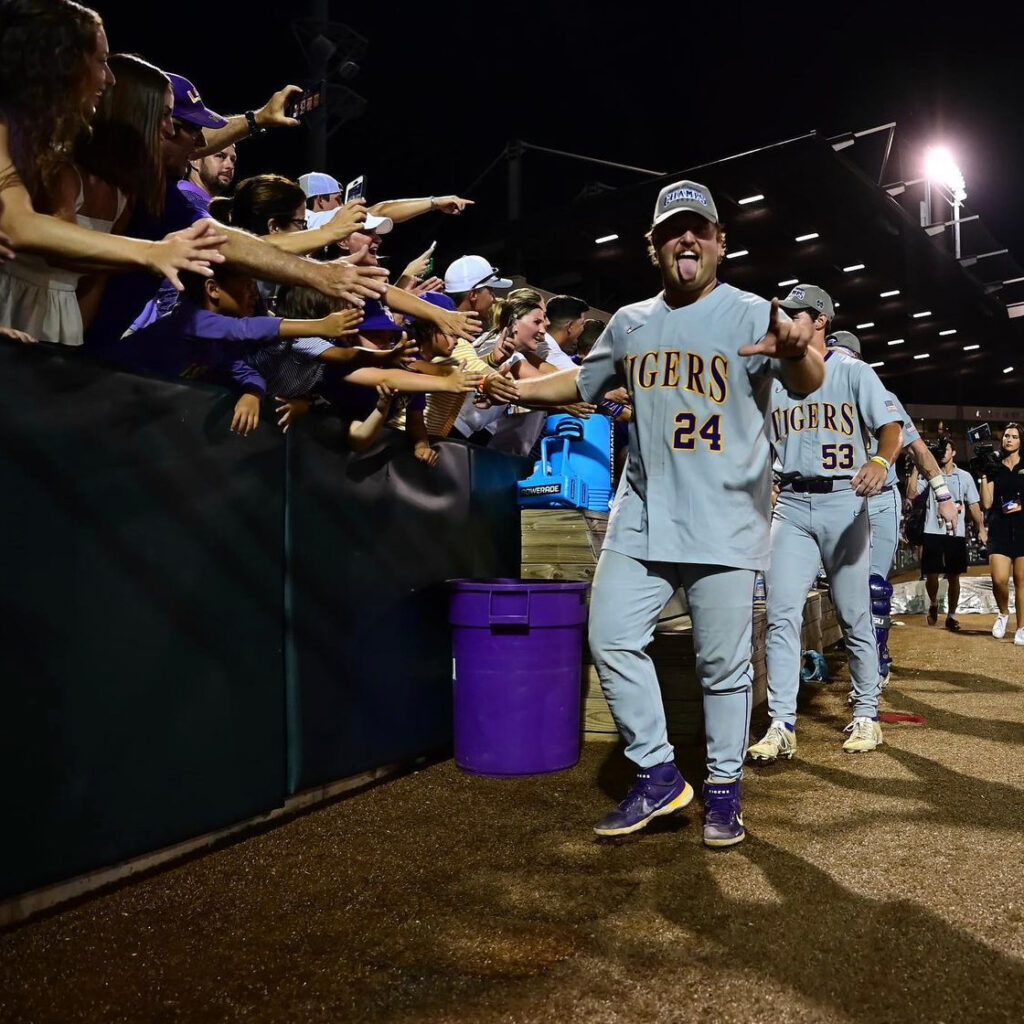By Kenny Burgess
The Men’s College Baseball World Series starts this Friday, Jun.16, and there are eight teams left vying to be the last team standing. The tournament will start off double-elimination style and the final matchup will be a best-of-three series. Before we hop into the first-round matchups, we’re going to take a look at how important winning the first game is.
Importance Of Avoiding The Losers Bracket
Winning the first game in Omaha has proved to be important as in the past five years only one team has gone on to win the title after losing its first game. Obviously, winning the first game puts you at an advantage with room for error throughout the rest of the tournament. Giving yourself a buffer by winning your first game has been very advantageous to the past five winners as only one team (Vanderbilt 2019) has run the table prior to reaching the finals. Looking back at this trend makes me think that the first game should be seen as a must-win for this year’s field.
First Round Matchups
Game 1: TCU (-175) vs. Oral Roberts (+140) | Friday, Jun. 16, 2 p.m. ET

The first game features the biggest long shot of the tournament — Oral Roberts and TCU. ORU shocked the baseball world by sweeping its way through Super Regionals and clinching the series over the Oregon Ducks to earn the spot in Omaha. TCU won the Big XII Championship before winning its regional game and then secured two straight wins over then-No. 13 Indiana State to get to the CWS.
TCU hasn’t lost a postseason game yet and will lean heavily on its top two arms of Kole Klecker and Sam Stoutenborough in order to advance. Klecker was dominant in the Super Regional, throwing seven scoreless innings and striking out nine batters. The Horned Frogs’ offense is also dangerous and they were explosive in the regionals, scoring 44 runs in just three games. The ability to win either high or low-scoring games makes TCU a scary team in this tournament.
Oral Roberts found its way to Omaha thanks to the prolific offense that has six players boasting averages over .300 and OPSs over .900. The Golden Eagles’at- bats have been particularly hot since the start of the postseason, scoring 10 runs per game, and are led on the offensive side of the ball by Jonah Cox and Matt Hogan. However, ORU has just a +11 run differential this tournament and might require a good bit of luck to advance.
Game 2: Florida (-135) vs. Virginia (+105) | Friday, Jun. 16, 7 p.m. ET

The second game features two teams that are looking for their second national title in the last 10 years. These two are the clear favorites on this side of the bracket, but only one will be heading to the loser’s bracket so this game is of the utmost importance to both teams. After winning its regional tournament, the Gators swept through South Carolina while Virginia battled it out against Duke. The Cavaliers were able to rebound after dropping a game in the series and outscored Duke 26-6 in the final two games to get to Omaha.
Florida’s top threat comes in the form of two-way player Jac Caglianone. The 7-3 pitcher with a 3.78 ERA holds the program record for home runs hit in a single season (31 and counting). The Gators’ strength is their pitching staff and along with Caglianone, they have two additional starters with over 120 strikeouts this season — Hurston Waldrep and Brandon Sproat. Florida will have to rely on pitching to lead them to the World Series crown.
Virginia is known for its at-bats and is coming off an impressive showing at the Super Regional. Third baseman Jake Gelof leads the Hoos with 23 home runs and 89 RBI this season and they have the ACC Player of the Year/top draft prospect in Kyle Teel behind the plate. Virginia also has solid pitching with one pitcher with more than 15 IP this season that has an ERA over 4.00. Virginia’s primary three starters combine for a 29-5 record.
Game 3: Wake Forest (-230) vs. Stanford (+185) | Saturday, Jun. 17, 2 p.m. ET

The first game in the second bracket has the overall favorite as Wake Forest over Stanford. Wake Forest will be back in Omaha for the first time since 1955 and has been utterly dominant all season long. Wake Forest finished with a school record of 52 wins and is the first No. 1 national seed to advance to the Men’s College World Series since 2018. Stanford is no slouch, but has a much different path to Omaha than the Deacons. In both the Regionals and Super Regionals, the Cardinal suffered early losses that forced it to battle in the rest of its games in order to punch its ticket to Omaha for the third straight year.
As a team, Wake Forest relies on consistent hitting from its batters rather than power shots. Wake Forest only have two players with 20+ home runs on the season, however, the team doesn’t lack talent — seven players bat around .300. The Deacons are led by Nick Kurtz, who is hitting .375 and has an absurd OPS of 1.361. Wake’s other top offensive threat is Brock Wilken, who leads the team in home runs and RBIs. In the last Super Regional game, Wilken hit his 70th career home run, breaking the ACC record for most career home runs.
Stanford is led by maybe the hottest pitcher in the nation, Quinn Matthews, who is coming off a complete game of 16 strikeouts against Texas in the Super Regionals. Matthews enters Omaha with an ERA of 3.60 and 1.21 WHIP in 120 innings. Alongside Matthews, Joey Dixon is a capable second with a 4.86 ERA in 13 starts. Stanford’s offense is known for its homerun power as Tommy Troy, Alberto Rios, and Braden Montgomery each have over 15 home runs this season.
Game 4: LSU (-205) vs. Tennessee (+165) | Saturday, Jun. 17, 7 p.m. ET

LSU enters Omaha having won its last five games after sweeping its regional tournament and beating Kentucky twice to earn itself a spot among the final eight. Tennessee also swept its regional tournament prior to dropping game one of the Super Regional to Southern Mississippi. The Vols rebounded however and secured their spot in Omaha.
The LSU Tigers are truly clicking at the right time and their pitching staff has been very solid of late. Early on in the season, this was viewed as the Tigers’ weak spot, but has since become reliable and consistent. The Tigers are led at the top of the rotation by Paul Skenes, who has a 1.77 ERA and 188 strikeouts in 107 innings pitched. The Tigers offense is one of the best in the country and they have six players batting over .300 while sporting OPSs over 1.000. LSU is led in the outfield by Dylan Crews, who has an outrageous OPS of 1.303 and is hitting .433 this year. Tommy White, the big power batter, has 22 home runs and has driven in 97 runs this year.
Tennessee also has a dangerous lineup and as a team, boasts a .284 batting average. With a top-heavy lineup, inconsistency has plagued Tennessee throughout the season. Griffin Merritt leads his team hitting .315 and belting 18 home runs followed by Christian Moore, who posted a .313 batting average to go along with 17 home runs. The Vols have one of the deepest pitching staffs in the country and they boast the second-best ERA in the country at 3.57. The Vols’ top three pitchers are Chase Dollander, Chase Burns, and Drew Beam, and are second in the country in strikeouts per nine innings with a reliable bullpen.
This year’s Men’s College World Series is one of the deepest fields we have seen in years and truly any of the eight teams could come out on top. If history tells us anything, this weekend should provide some electric games and winning game one could be pivotal for any of the teams’ championship aspirations.
Photo credits: NCAA Website, TCU Baseball’s Instagram, LSU Baseball’s Instagram, Virginia Baseball’s Instagram, Wake Forest Baseball’s Instagram




